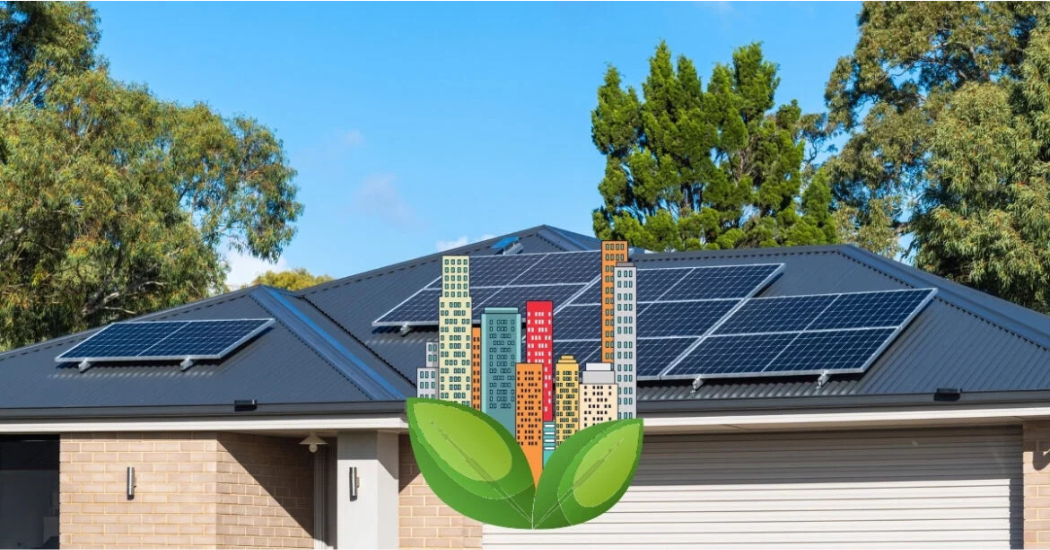Sustainable architecture is all about creating eco-friendly buildings that reduce their impact on the environment. If you’re looking for a roofing option that fits this goal perfectly, metal roofs are worth considering. They’ve become a top trend in sustainable design thanks to their energy efficiency, durability, and recyclability.
Metal roofs are not only built to last but also help conserve energy by reflecting heat, which keeps your home cooler in the summer. Plus, many are made from recycled materials, making them an environmentally conscious choice from start to finish.
What Is Sustainable Architecture?
Sustainable architecture is a design approach focused on minimizing the environmental impact of buildings. It incorporates energy efficiency, renewable resources, and eco-friendly materials to create structures that are both functional and environmentally responsible. The goal is to reduce carbon footprints, conserve natural resources, and promote healthier living spaces for occupants.
8 Reasons Why Metal Roofs Are Leading the Charge in Sustainable Architecture
Here are eight reasons why metal roofs are at the forefront of sustainable design.
1. Exceptional Longevity and Durability
Metal roofs are an investment in long-term performance. Unlike traditional roofing materials such as asphalt shingles or wood, metal roofs are designed to endure for decades. With a lifespan ranging from 40 to 70 years, they far outlast most other options. Their resistance to extreme weather, including heavy snow, high winds, hail, and intense heat, makes them a practical choice for areas prone to harsh climates.
This durability reduces the need for frequent repairs or replacements. Over time, fewer resources are consumed for maintenance, making metal roofs an eco-friendly option. Additionally, modern metal roofing is treated with advanced finishes that prevent rust and corrosion, further enhancing its longevity.
Homeowners and builders alike appreciate the reliability of metal roofs, knowing they can withstand the elements for decades. This longevity not only saves money on repairs but also minimizes waste, as fewer materials end up in landfills. Choosing metal roofs means choosing a resilient and sustainable option that meets the demands of modern architecture.
2. Eco-Friendly Materials
Metal roofs are an environmentally responsible choice. Many are made from recycled materials, such as aluminum or steel, which reduces the demand for raw resources. Additionally, metal roofs themselves are fully recyclable at the end of their lifespan. Unlike traditional roofing materials that often end up in landfills, metal roofing supports the circular economy by being repurposed or recycled.
This sustainable aspect aligns perfectly with green building practices. By choosing a metal roof, homeowners and builders contribute to reducing waste and conserving natural resources. Furthermore, the production of metal roofing has evolved to include more energy-efficient processes, which lowers its overall environmental impact.
Metal roofs also pair well with other sustainable features, such as rainwater harvesting systems. Their smooth surface makes it easier to collect and channel rainwater for reuse. These eco-friendly characteristics make metal roofing a natural fit for projects aiming to achieve certifications like LEED or other green building standards.
3. Energy Efficiency at Its Best
Metal roofs are a game-changer when it comes to energy efficiency. One of their standout features is their ability to reflect sunlight, reducing heat absorption. This is particularly beneficial in warmer climates, where buildings can stay cooler without over-relying on air conditioning. A cooler building means lower energy consumption, which translates to reduced utility bills and a smaller carbon footprint.
Many metal roofs also come with advanced coatings that enhance their reflective properties. These coatings, often referred to as “cool roof” technology, further improve thermal performance. As a result, metal roofs help maintain a consistent indoor temperature, reducing strain on HVAC systems year-round.
The energy savings provided by metal roofing systems are not only beneficial for the environment but also for building owners. Over time, the reduced energy consumption can lead to significant cost savings. This dual advantage—environmental and economic—makes metal roofs a preferred choice for sustainable architecture.
4. Ideal for Solar Panel Integration
Metal roofs and solar panels are a perfect match. The strong and durable surface of a metal roof provides a stable base for mounting solar panels. This compatibility enhances the overall efficiency of renewable energy systems. Homeowners can harness solar energy more effectively, further reducing their reliance on non-renewable resources.
Standing seam metal roofs, in particular, are ideal for solar panel installation. These roofs allow panels to be attached without penetrating the surface, preserving the roof’s integrity and extending its lifespan. The combination of solar panels and a reflective metal roof maximizes energy efficiency by generating power while reducing heat absorption.
For those looking to lower energy costs and embrace sustainability, this pairing offers a seamless solution. A metal roof not only supports the weight and structure of solar panels but also complements their environmental benefits. This synergy makes it a smart choice for green architecture and energy-conscious homeowners.
5. Lightweight and Easy Installation
Metal roofs are surprisingly lightweight compared to traditional materials like concrete tiles or slate. This makes them easier to transport, handle, and install. The lighter weight reduces the structural load on a building, which can lead to cost savings during construction. Buildings with less stress on their structure are also safer and more durable over time.
Additionally, the simplicity of metal roof installation can save time and resources. Many systems come in large panels or modular sections that fit together seamlessly. This minimizes labor and reduces the overall environmental impact of the installation process.
For retrofitting projects, metal roofs are particularly advantageous. They can often be installed over existing roofing materials, eliminating the need for removal and reducing waste. This adaptability, combined with the material’s long-term durability, makes metal roofs a practical and eco-friendly choice for both new construction and renovation projects.
6. Aesthetic Versatility
Metal roofs are not just functional—they’re also stylish. With a variety of finishes, colors, and designs available, they can complement nearly any architectural style. From modern minimalism to rustic charm, metal roofing adapts to meet aesthetic preferences.
Options such as standing seam panels, metal shingles, and stone-coated finishes give homeowners flexibility in design. Additionally, advanced coatings ensure that colors remain vibrant for years, resisting fading from UV exposure or harsh weather. This aesthetic appeal enhances the overall value of a building, blending sustainability with visual appeal.
Beyond their looks, metal roofs also provide a clean and uniform appearance. Their sleek lines and smooth surfaces make them an attractive option for modern architectural trends. With so many design possibilities, metal roofs prove that sustainability and style can go hand in hand.
7. Fire and Weather Resistance
Safety is a crucial consideration in sustainable design, and metal roofs excel in this area. They are naturally fire-resistant, offering peace of mind for homeowners in wildfire-prone areas. Unlike materials such as wood or asphalt, metal roofs do not ignite, providing an added layer of protection.
Metal roofs also perform exceptionally well in extreme weather conditions. They can withstand heavy rain, hail, and high winds without sustaining significant damage. This resilience ensures that buildings remain safe and secure during harsh storms, reducing the need for frequent repairs.
For regions facing unpredictable weather patterns due to climate change, metal roofs are a reliable choice. Their ability to endure and protect against the elements makes them a practical and sustainable roofing option.
8. Low Maintenance Requirements
Metal roofs require minimal upkeep compared to other roofing materials. They do not crack, rot, or warp, even after decades of exposure to the elements. This low-maintenance nature reduces the resources and time needed to keep them in top condition.
Routine maintenance typically involves inspections and occasional cleaning to remove debris or dirt. Unlike shingles that may need frequent replacement or repair, metal roofs remain intact and functional with little intervention.
This durability and ease of care make them a cost-effective choice over time. Building owners can save on maintenance expenses while enjoying a roof that consistently performs well. By choosing a metal roof, you’re not just investing in sustainability but also in convenience and long-term reliability.
Ready to take the next step towards a more sustainable home? Installing a metal roof is an excellent way to improve your energy efficiency, reduce environmental impact, and enhance your property’s value. If you’re considering a roofing upgrade, now is the perfect time to explore metal roof options. Reach out to a local metal roofing contractor today to learn more about how a metal roof can benefit your home and contribute to a greener future. Don’t wait—make the smart, sustainable choice for your home today!
Final Thoughts
In conclusion, metal roofs are a standout choice for anyone looking to embrace sustainable architecture. Their durability, energy efficiency, and eco-friendly materials make them a smart investment for both the environment and your wallet. By opting for a metal roof, you’re not only enhancing the longevity of your home but also contributing to a more sustainable future. With benefits like energy savings, minimal maintenance, and recyclability, metal roofs are clearly a top trend in green building practices. Whether you’re constructing a new home or upgrading an existing one, choosing a metal roof is a decision that aligns with both modern design and environmental responsibility. Ready to make the switch? Sustainable architecture has never looked so good!

























